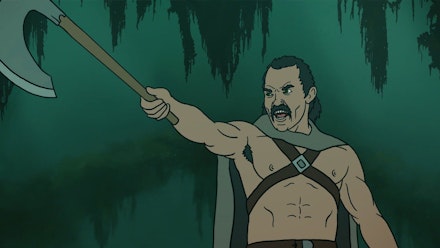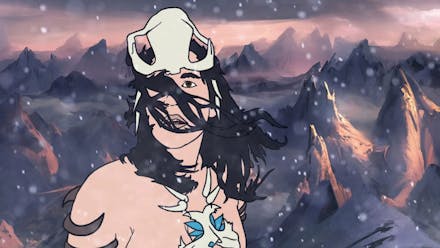An oddity that clashes Heavy Metal and Ralph Bakshi-style sword-and-sorcery (and sex) with almost Lovecraftian cosmic encounters, The Spine Of Night is a fascinating indie animation; a deliberate throwback to a bygone era of animation. The passion of directors Philip Gelatt and Morgan Galen King's seven-year project — drawn out by the arduous process of rotoscoping (essentially, tracing frame-by-frame over live footage) — combined with over-the-top, face-melting bloodshed, old-school hand-painted backdrops and vivid, otherworldly neon colours really befits its curious fantasy narrative. The style, it’s fair to say, is more involving than the particulars of this aeons-spanning tale, though that feels intended: it's really channelling a certain vibe, right down to the wild synths and choral chants of its score.

That story is decentralised from any one figure. It unfolds as a not-quite anthology, seeing different generations fighting the same inevitable entropy, with environmentalist anxiety tied up in its story of the mysterious dying power known as ‘the Bloom’, and the looming death of Tzod’s (voiced by Lucy Lawless) home swamp. In telling this tale, the directors gathered a number of actors with genre credentials for the voice cast, all game but some significantly stronger than others — a snarling Richard E. Grant, fanatical Lucy Lawless and a pre-Get Out Betty Gabriel particularly shine.
It can be a little rough around the edges. The aforementioned voice-acting falls a little flat in spots, and sometimes the realistically animated characters can feel somewhat divorced from the painterly backgrounds. But such patches are part of the nature of a small-scale project such as this, and it never feels truly intrusive, especially when examined against the ambition of its narrative and a mash-up of genre and animation style that itself feels ancient.
